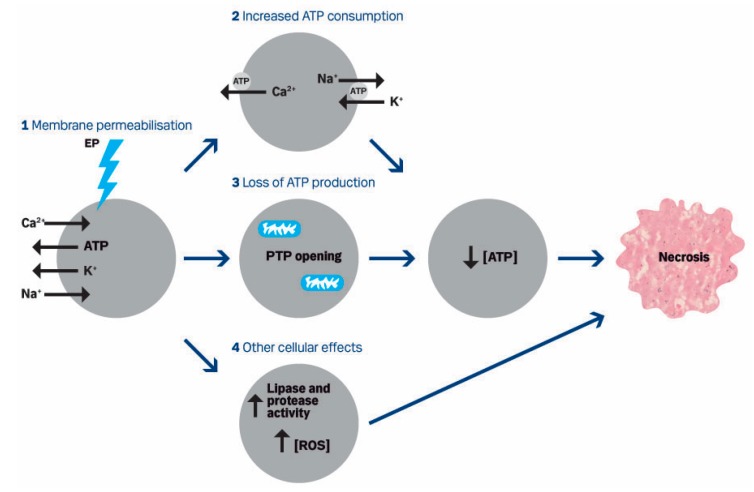Figure 4.
Proposed mechanism of action published in 2012. Calcium electroporation of cells induces influx of calcium and sodium and loss of ATP and potassium due to the concentration gradients (1). This may lead to increased ATP consumption (2) by the calcium ATPase and sodium potassium ATPase trying to re-establish the calcium homeostasis as well as loss of ATP production (3) since increased intracellular calcium can induce the opening of permeability transition pores (PTP) in the mitochondria membrane dissipating the proton gradient. This leads to ATP depletion which has been observed after calcium electroporation as well as necrotic cell death. Other cellular effects (4) such as increased activity of lipases and proteases as well as increased concentration of reactive oxygen species (ROS) may also be involved. From Frandsen et al., 2012 [18].

